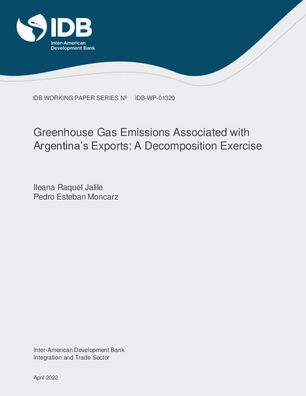Greenhouse Gas Emissions Associated with Argentina's Exports: A Decomposition Exercise
Date
Apr 2022
Two databases are constructed on GHG emissions associated with Argentina's international trade between 2000 and 2017, emissions derived from the production of exported goods and those associated with the international transport of exports and imports. Food, beverages, and tobacco, and agriculture, hunting, and related activities, followed by manufactures of metal and chemical products, are the main sectors that explain GHG emissions linked to exports. Petroleum, gas, and mining became less significant. The same sectors explain most of the CO2 emissions linked to the international transportation of exports. For emissions linked to the transportation of imports used in the production of exports, the main contributing sectors are those relating to industrial manufacturing. A decomposition exercise reveals that for emissions linked to the production of exports, the scale effect contributed more significantly in 2000-2011 than in 2012-2017, although in both cases its effect was positive. The composition effect was much less significant. For the emissions associated with international transportation, the main drivers were the scale, sector, and partner effects. Changes in the sector structure of exports appear to have caused more emissions between 2000 to 2011, but the opposite was observed between 2011 and 2017. In the case of emissions from international transportation, changes in the sector structure increased pollution in the case of the transportation of exports, while the opposite was the case for the transportation of imports.




